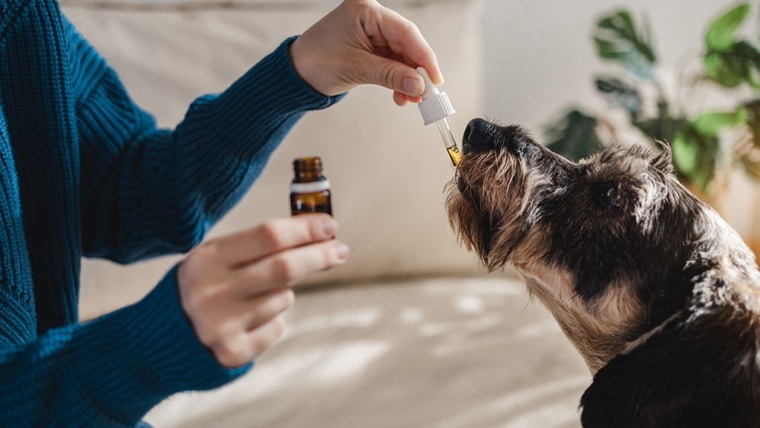
If you are wondering, “if your dog can eat grapes and raisins?” the simple reply is no. dogs make friendly pets, and they are fond of eating human foods sitting alongside the dining table. Plenty of human foods are safe and healthy for your furry friend. However, some foods are full of nutrition that your dog can’t eat because they exert harmful effects on your dog’s health. Some of the human foods are even toxic, including grapes, and you are strictly prohibited from offering such poisonous foods to your furry friend.
Raisins are just dried forms of grapes, so it is obvious for raisins, too, whatever I discuss for the grapes in this article.
How Toxic Are Grapes & Raisins to Dogs?
A well-established fact is that grapes and their dried form, raisins, are harmful or even toxic to dogs; however, scientists don’t exactly know which component is causing toxicity in the grapes. There are speculations that mycotoxins – toxins produced by fungi or salicylate compounds might be causing the toxicity. Both these compounds are naturally present in grapes.
Two factors explain the cause of toxicity in dogs. First, we can say that many grapes may cause toxicity in dogs; this is a fair argument because excess of anything is bad. Secondly, we can say that dogs are sensitive to grapes; either way, you can’t enjoy the luxury of providing grapes to your dog. There is also no scientific data that tells us how much amount of grape is toxic to dogs.
The exact toxic amount may differ according to the dog. Your dog’s sensitivity can tell us the exact amount of the toxic dose. However, according to approximate speculations, even one grape can be toxic to small dogs. In actuality, we can’t take the risk to offer even one or two grapes for our dogs. That is why vets take the case of grape toxicity seriously and perform immediate action.
Symptoms of Grape Toxicity
Unfortunately, if your dog is suffering grape toxicity, it shows non-specific signs. Your dog may exhibit signs that can relate to other diseases. Veterinarians don’t rely on the signs and symptoms while diagnosing grape toxicity. Instead, they rely on the history provided by the pet caretaker, which can lead to a proper diagnosis.
The general abnormalities that your dog can exhibit are as follows.
- Your dog may be sedentary
- Your dog may not eat and shows dullness
- Vomiting or diarrhea may be obvious
- General body weakness
- Abdominal tenderness or severe pain in the abdomen
- Dehydration can also be an obvious sign. You can check the signs of dehydration by opening and observing the mouth. You can quickly check the dehydration by pinching and pulling the skin near the shoulder of your dog. The skin should come back in its original position immediately; if it takes more than 3 seconds to return to its position, its shows dehydration of your dog.
- In severe cases, kidney failure occurs
New smells seem interesting and appealing to your furry friend. Your dog always hopes for what you eat and wait for you to drop eatables on the ground. You should be more sensitive than your furry fellow to prevent him from toxic eatables.
What to do if my dog ate grapes?
In medical science, there is a fixed protocol to treat toxicity. The protocol prevents the absorption of toxins or poisonous substances from absorbing in the body. If the toxic substance is not absorbed in the body, the remedial therapy will be to prevent the absorption of the substance in blood by inducing vomiting. If the substance is already absorbed in the body, veterinarians shall administer intravenous fluids to dilute the toxin in the blood.
So, when you are sure that your dog has ingested grapes, your first and foremost step should be to call your vet. Your vet shall encourage vomiting to eliminate the toxin inside the stomach. You should remember that vomiting should be encouraged only when your furry fellow is not unconscious. If your dog is not calm, showing difficulty in breathing, or suffering shock, vomiting should not be encouraged
Do I need to visit a veterinarian?
It is immediate to visit your vet if your furry fellow shows signs of shock, difficulty breathing, and unconsciousness. If you encourage vomiting after the toxin is absorbed in the body, it will not be effective. In this case, the administration of intravenous fluids to dilute the toxin will be effective. Your furry fellow may be kept on IV fluids for the next 24 hours or maybe hospitalized. So, it is better to contact your vet in this regard.
What is the prognosis?
The prognosis of any toxicity, when treated immediately, is good. Your furry fellow can survive without any damage if treatment is started in a few hours of ingestion. However, if kidney failure occurs or starts to occur, the prognosis is not good. In this condition, the chances of survival are 50/50. It is always better to prevent rather than to treat. Therefore, you should avoid access to such toxic foods as much as possible.


